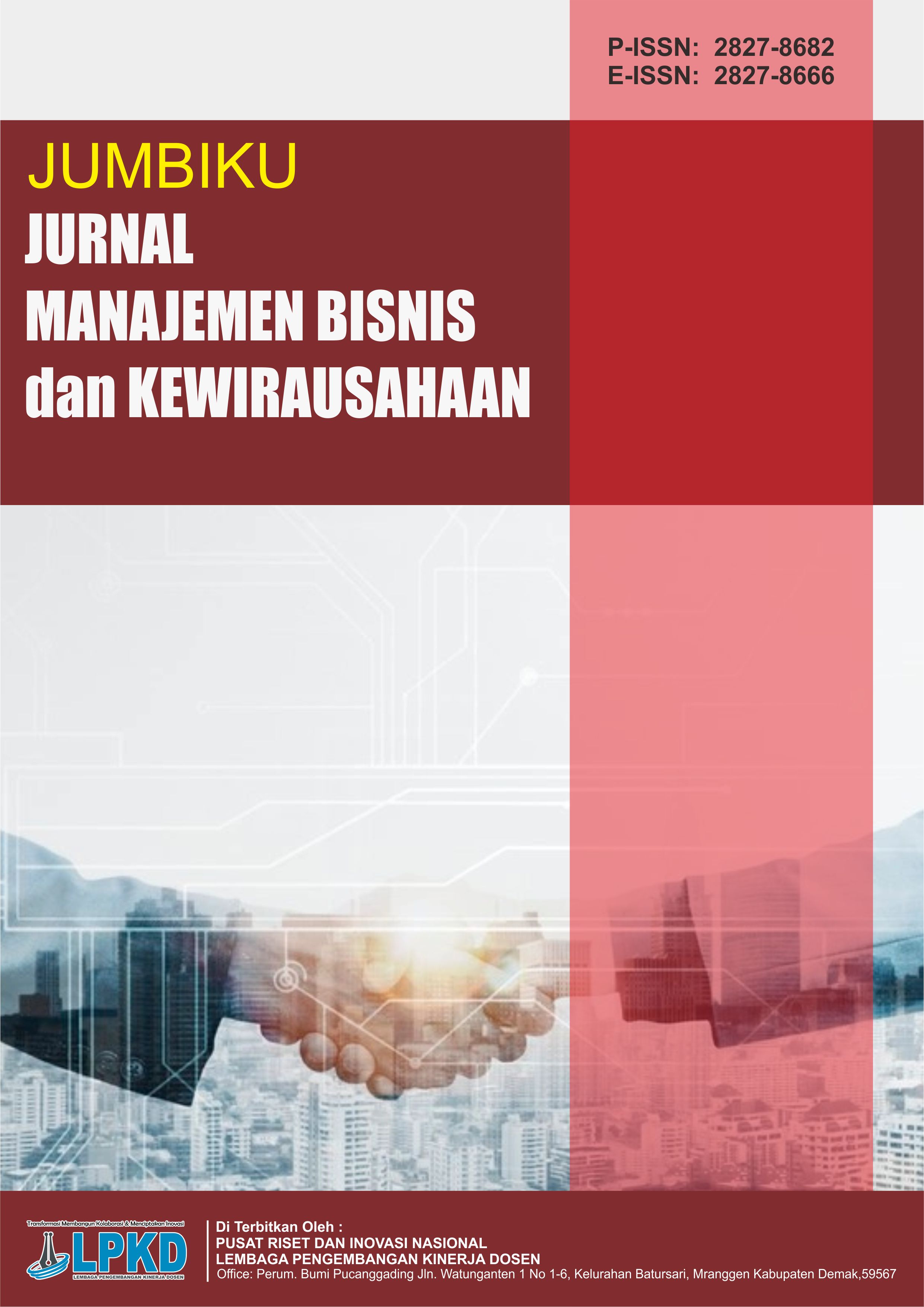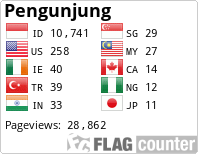Leveraging Social Media Engagement for Business Growth: Insights into Brand Awareness and Customer Loyalty in Human Resource Management
DOI:
https://doi.org/10.55606/jumbiku.v5i1.5975Keywords:
Digital marketing, Price, Product quality, Sales performance, SMEs, Traditional foodAbstract
This research explores the effects of digital marketing strategy, pricing, and product quality on the sales performance of Rendang Cipuik GG, a traditional culinary SME based in Lima Puluh Kota Regency, Indonesia. Employing a quantitative explanatory approach, data were gathered from 100 consumers using structured questionnaires and analyzed through multiple regression alongside SEM-PLS techniques. The analysis demonstrates that digital marketing and product quality exert significant positive influences on sales performance, whereas pricing shows no substantial effect. Nonetheless, the joint analysis reveals that all three variables, when considered simultaneously, contribute to shaping sales outcomes.The findings emphasize that in heritage-based culinary industries, consumers are more inclined to value authenticity, taste consistency, and overall product excellence rather than price competitiveness. This result highlights the pivotal role of digital transformation for SMEs, particularly in leveraging online platforms to expand market reach and strengthen brand presence. By maintaining high-quality standards while embracing digital channels, SMEs can sustain competitiveness and secure consumer loyalty in an increasingly digital economy. From a theoretical standpoint, this study enriches the existing body of SME marketing literature by presenting a comprehensive model that integrates digital marketing, pricing, and product quality into one framework. It adds empirical evidence supporting the primacy of non-price factors in shaping sales dynamics within traditional food businesses. Practically, the research offers actionable insights for SME owners and managers: prioritizing investment in digital marketing initiatives and ensuring consistent product quality should be the cornerstone of competitive strategies. Ultimately, the study illustrates that heritage-based SMEs must align tradition with innovation to remain sustainable and profitable in the digital era.
Downloads
References
Barger, V. A., Peltier, J. W., & Schultz, D. E. (2016). Social media and consumer engagement: A review and research agenda. Journal of the Academy of Marketing Science, 44(1), 94–116. https://doi.org/10.1007/s11747-015-0434-3
Boulding, W., Kalra, A., Staelin, R., & Zeithaml, V. A. (1999). The value of time and consistency in customer preferences. Journal of Marketing Research, 36(3), 296–305. https://doi.org/10.1177/002224379903600303
Bryman, A. (2016). Social research methods (5th ed.). Oxford University Press.
Chahal, H., & Rani, M. (2017). The impact of social media on business growth. Journal of Business Research, 70, 99–108. https://doi.org/10.1016/j.jbusres.2016.07.025
Chin, W. W. (2010). How to write up and report PLS analyses. In V. E. Vinzi, W. W. Chin, J. Henseler, & H. Wang (Eds.), Handbook of partial least squares: Concepts, methods and applications (pp. 655–690). Springer. https://doi.org/10.1007/978-3-540-32827-8_29
Creswell, J. W., & Creswell, J. D. (2017). Research design: Qualitative, quantitative, and mixed methods approaches (5th ed.). Sage Publications.
Dehghani, M., & Tumer, M. (2015). Marketing via social media: A study on the influence of social media on business growth. Journal of Business & Economic Research, 13(2), 95–102. https://doi.org/10.19030/jber.v13i2.9295
Hair, J. F., Hult, G. T. M., Ringle, C. M., & Sarstedt, M. (2017). A primer on partial least squares structural equation modeling (PLS-SEM) (2nd ed.). Sage Publications.
Huang, R. (2020). The effects of social media engagement on brand awareness and brand loyalty: A case of consumer electronics. Journal of Marketing Research, 57(6), 1015–1029. https://doi.org/10.1509/jmr.18.0420
Kaplan, A. M., & Haenlein, M. (2010). Users of the world, unite! The challenges and opportunities of social media. Business Horizons, 53(1), 59–68. https://doi.org/10.1016/j.bushor.2009.09.003
Keller, K. L. (2003). Strategic brand management: Building, measuring, and managing brand equity. Prentice Hall.
Laroche, M., Habibi, M. R., & Richard, M. O. (2013). To be or not to be in social media: How brand loyalty is affected by social media? Journal of Business Research, 66(1), 1–12. https://doi.org/10.1016/j.jbusres.2012.05.002
Mangold, W. G., & Faulds, D. J. (2009). Social media: The new hybrid element of the promotion mix. Business Horizons, 52(4), 357–365. https://doi.org/10.1016/j.bushor.2009.03.002
Morgan, R. M., & Hunt, S. D. (1994). The commitment-trust theory of relationship marketing. Journal of Marketing, 58(3), 20–38. https://doi.org/10.1177/002224299405800302
Sashi, C. M. (2012). Customer engagement, buyer-seller relationships, and social media. Management Decision, 50(9), 1331–1345. https://doi.org/10.1108/00251741211253528
Thomson, M., MacInnis, D. J., & Park, C. W. (2005). The tipping point: Toward a theory of brand diffusion. Journal of Marketing Research, 42(1), 1–16. https://doi.org/10.1509/jmkr.42.1.1.55998
Vivek, S. D., Beatty, S. E., & Morgan, R. M. (2012). Customer engagement: Exploring customer relationships beyond purchase. Journal of Marketing Theory and Practice, 20(2), 122–146. https://doi.org/10.2753/MTP1069-6679200202
Downloads
Published
How to Cite
Issue
Section
License
Copyright (c) 2025 Jurnal Manajemen, Bisnis dan Kewirausahaan

This work is licensed under a Creative Commons Attribution-ShareAlike 4.0 International License.








